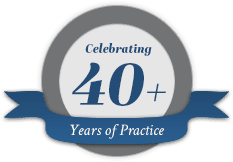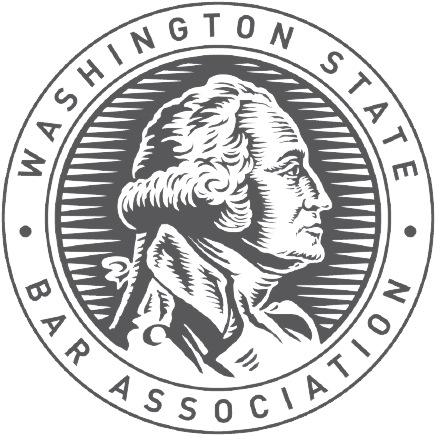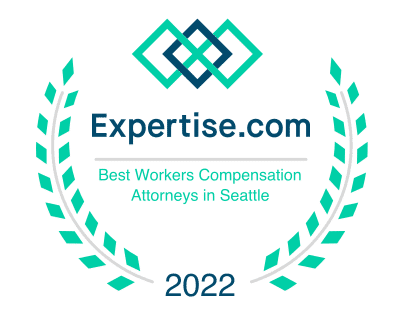There is a New Law in Washington State. Now first responders can file a successful PTSD claim for the effects of CUMULATIVE trauma.
The old law did not allow PTSD claims which were based on cumulative psychological traumas that occurs over time and combine to cause severe mental problems. This old law is still in effect for all occupations in Washington State, except first responders.
The new law is a fix to the old law and exempts certain firefighters, emergency medical technicians (EMT’s), and law enforcement officers from the old L&I rule.
Want to Understand the New PTSD First Responder Law?
Then understand this:
There is a profound difference between injury and occupational disease. A traumatized worker in Washington State should choose their words carefully. They must understand what has happened to them and than clearly say what they mean when describing their history of job incident(s). A worker needs to say the right thing to the doctor about how the PTSD has developed. Once the medical history is written into the records it determines how the claim will be looked at. Understand the impact of what you are saying before you talk with your doctor.
Want to Be Helped By the New First Responder PTSD Law?
The new law allows L&I PTSD claims caused by cumulative stress for MOST FIRST RESPONDERS, (but not other occupations).
This means that first responders can now file and be successful with a cumulative trauma PTSD claim.
The new law goes much further. It creates a rebutable presumption that cumulative stress for first responders is an occupational disease.
This rebutable presumption is a huge benefit to first responders. HAVING an occupational disease is predictable and common because by it’s nature first responder work causes PTSD. PROVING you have an occupational disease has previously been expensive and difficult. This new law for first responders is very helpful because it doesn’t just allow a cumulative PTSD claim, it also makes it easier to prove that the PTSD is job related. This easing of the proof requirement is done with a rebutable presumption.
What is Rebutable Presumption?
The new law for first responders creates a rebutable presumption that cumulative stress is an occupational disease. This rebutable presumption is a legal procedural rule designed to assist L&I claimants when they are proving a claim. As it applies to this new law, and subject to the limitations listed below, any occupational disease or inury PTSD to first responders will now be presumed to be work related, unless proven otherwise.
Why is This Presumption Helpful?
- As the law was previously written, without a presumption, a first responder had to prove the medical details of their PTSD claim. This required expensive and hard to get psychiatric or psychological testimony.
- Under the new law, the first responder first shows they have PTSD, and then this medical condition will be presumed to be related to their job. If the employer chooses to fight the claim, the employer will have to prove that there is no PTSD or that the PTSD is not job related.
- Said another way this legal presumption is helpful because first responders’ PTSD claims, both occupational disease and injury, will now be easier to prove.
Important Details Limit the Scope of this New Legislation
- PTSD means a disorder that meets the diagnostic criteria for post-traumatic stress specified by the American Psychiatric Association in the Diagnostic and Statistics Manual of Mental Disorders, Fifth Edition, or in a later edition as adopted by L&I rule.
- The cause of the PTSD is important. Even under the new law PTSD for first responders is excluded an an occupational disease if the condition is directly related to disciplinary action, work evaluations, job transfer, layoff, demotion, or termination taken in good faith by the employer.
- For the rebutable presumption to apply, PTSD must develop after the individual has served at least 10 years. This section appears to nevertheless allow the first responders PTSD to be a valid occupational disease, only without the helpful presumption.
- For the rebutable presumption to apply to workers hired after the effective date of the legislation, that worker must, at the time of hire, submit to an employer sponsored exam which rules out PTSD. If no exam is provided by the employer, then there is no corresponding requirement.
Who Qualifies as a First Responder for the New Law?
- A first responder is:
- an emergency medical technician (EMT), generally defined as a full time city and county emergency medical technician
- a law enforcement officer, probably defined as full time commissioned county sheriffs, deputy sheriffs, and city police. See also: RCW 41.26.030 (19)
- certain firefighters as enumerated in RCW 51.08.142 and as previously enumerated in RCW 51.32.185, together with some additional supervisors
- In addition to this new law, there still exists certain provisions of RCW 51.32.185 which benefits enumerated firefighters with occupational disease presumptions for respiratory disease, heart problems, cancer and infectious diseases.
Do I Need a Lawyer to Help with My PTSD Claim?
Many claims can initially be handled without a lawyer. It helps to understand and pay attention to what is written here. Your medical records will define and limit the success of your claim. Be honest, precise, and careful what you say to a doctor, or triage nurse when they have a pen in their hand. If your claim is denied, consult with a lawyer.
Basic L&I Law
- These laws are complex
- L&I classifies all on the job claims as either an injury or an occupational disease. It makes a big difference which type of L&I claim you have, injury or occupational disease.
- AN INJURY is a one time event occurring suddenly and traumatically. For example, falling off scaffolding and breaking your arm is an injury. For further details see injury.
- AN OCCUPATIONAL DISEASE is different than an injury. An occupational disease develops over time. For a detailed definition see L&I Claims are Either an Injury or an Occupational Disease An example of an occupational disease is a painter who breathes toxic chemical every day and develops asthma. The painters asthma is an occupational disease because it developed over an extended period of time and it arises naturally & proximately out of employment.
The Old PTSD Rule
- Under the old rule, no PTSD claim for cumulative trauma because L&I does not allow mental conditions caused by stress when they accumulate over time, and would otherwise be an occupational disease.
- However injury PTSD resulting from a single traumatic event has been and will continue to be an allowable L&I PTSD injury claim.
- A series of minor traumatic events is not an allowable L&I PTSD occupational disease.
- A single traumatic event of sufficient magnitude, that occurs within a series of minor traumatic events, is allowable as a PTSD injury.
Old and Current L&I Injury Law – (for everyone)
The Law for all claims (first responders and everyone else too) is that PTSD caused by one stressful event is allowed as an L&I injury. RCW 51.08.100 and WAC 296-14-300. A one time mental event, or one significant mental event in a series of events, is an allowable injury. For example, a first responder who has a person die in their arms. They then develops PTSD. They will have an allowable L&I injury PTSD claim, subject to these guidelines:
“As an injury, stress resulting from exposure to a single traumatic event, such as actual or threatened death, actual or threatened physical assault, actual or threatened sexual assault, and life-threatening traumatic injury, may be considered an industrial injury. These exposures must occur in one of the following ways:
- directly experiencing the event;
- witnessing, in person, the event as it occurred to others; or
- extreme exposure to aversive details of the event.”
Old and Current Occupational Disease Law – (for everyone Except first responders)
PTSD caused by repeated minor traumatic events is not allowed as an occupational disease. L&I does not allow mental conditions caused by stress when they accumulate over time.
Why Do First Responders Get a Special Law That Applies Only to Them?
First responders do the heavy lifting in the world of human tragedy. Every time they scrape up another lifeless body from a tragic accident, some of that tragedy rubs off on them. Every time they rescue and console a burned out family who has lost everything, it chokes them up too. Each time they risk their lives to restore law and order, their life thereafter is affected by that. Those experiences create real and lasting stressful changes in first responders . Over time these stressful experiences add up to PTSD.
First reponders pay a price for what they do. The price they pay is on the job PTSD. They deserve L&I benefits and now they can get those benefits.
What About Suicide?
Don’t Do It!
If you need help get it NOW!
Firefigher/EMT Behavior Health Alliance -provides resources that help
National Suicide Prevention Lifeline – 24 hours every day 1-800-273-8255
Suicide Prevention King County – Online helpful Information
Want More Information?
L&I and Suicide
L&I Claims- A Beginners’ Complete Guide to Job Injuries
L&I Benefit Information with 12 Proven Links That You Can Use Now
L&I Occupational Disease
COVID -19 and the Recent L&I Rule
Want to Contact Us:
Telephone – Call for information or a free strategy session –206-343-1988







